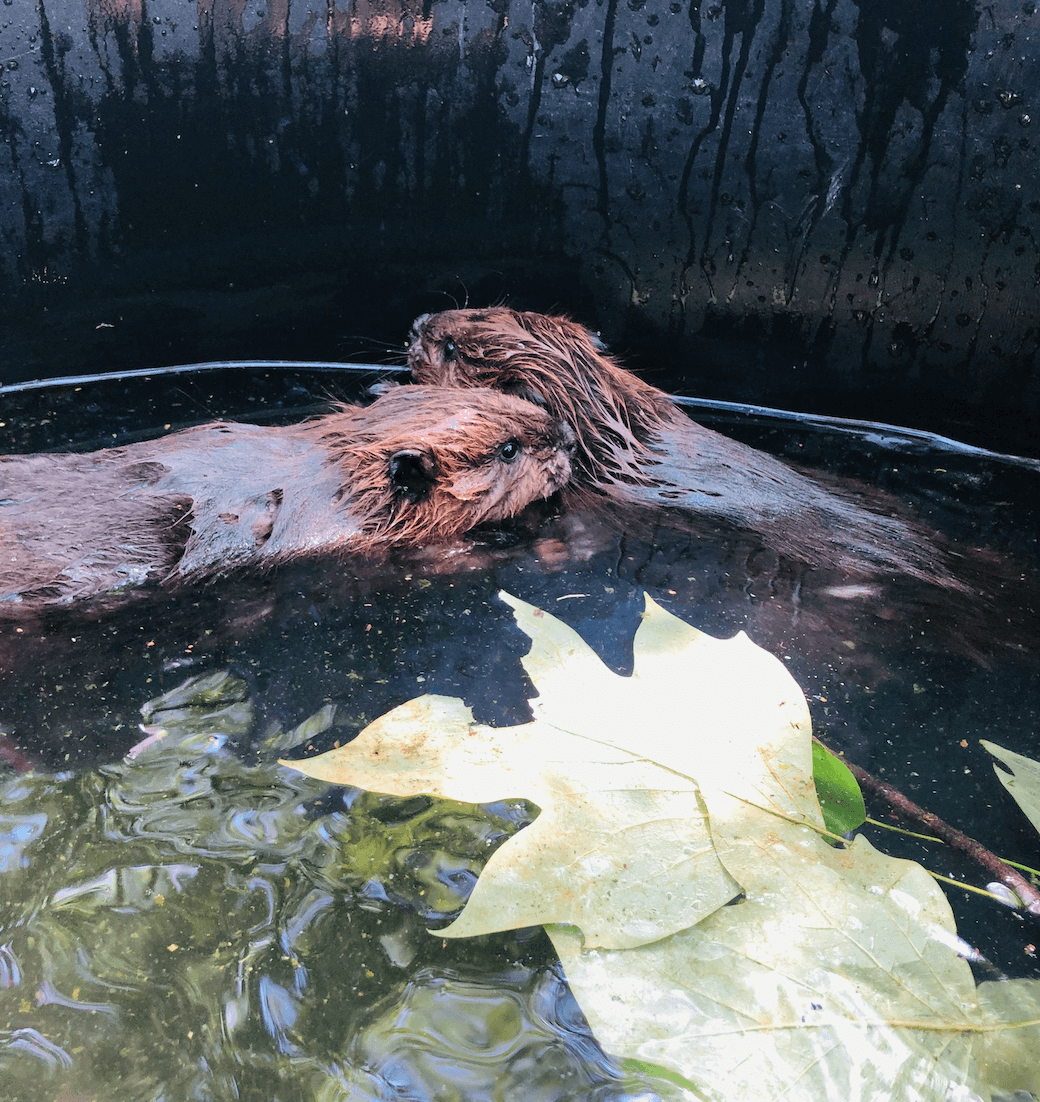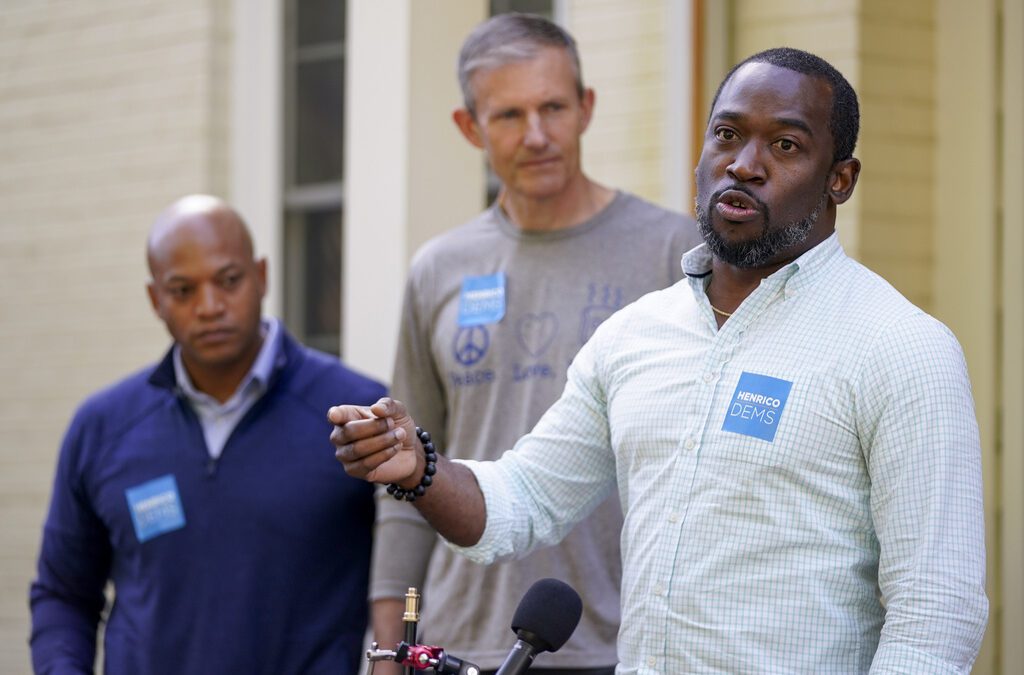
Contributed photo - By the time the beaver kits enter the wild, their rehabilitation bill will cash in at around $15,000.
Two baby beavers are making waves at a Roanoke wildlife center.
ROANOKE – It sounds like the start to an animated film. One rainy night in Southwest Virginia, flood waters swept away two beaver babies from their log home.
Instant orphans with no parents in sight, some kind individuals scooped the kits up and transported them to folks with the know-how to help.
The nine-week-old beavers arrived at the Southwest Virginia Wildlife Center of Roanoke ready for a second chance at life.
An Uncommon Occurrence in a Common Problem
According to Chester Leonard, assistant director of the wildlife center, the circumstances that stranded the kits happen from time to time in Virginia. That’s not surprising, considering there are nine major river systems running through the Commonwealth. Total, Virginia has approximately 49,350 miles of river.
“Flooding can displace semiaquatic animals, like beavers, frequently,” Leonard said. “We usually see a couple each year and other wildlife centers across the state report similar to higher numbers.”
The most recent case of displaced rodents played out much like those prior.
“However, we almost never get adults, as they are strong enough to fend for themselves in the water,” Leonard said. “They’re usually not allowed out of the den and into the open water until they are much older. Usually when we get them, almost 90% of the time the babies have pneumonia because they aren’t used to being wet and cold for so long.”
The team of Roanoke rodent rescuers jumped into action, ready to help.
Wildlife Center Rehabilitates Rodents
In the animal kingdom, different species require different time spans for leaving the nest. Kittens may leave their mothers after weaning, at minimum around eight weeks after birth. Puppies also typically find new homes at or after eight weeks of age.
Wild beaver kits take quite a bit longer to leave their parents than the average domesticated pet.
“Their rehab process is lengthy, lasting two years,” Leonard said. “This is the same amount of time that they would spend with their mother learning how to fend for themselves.”
He noted that part of a kit’s rehabilitation process includes swimming up to four times a day in a large tub with shallow water.
“They like to swim after eating because it stimulates them to defecate, which requires changing the water frequently – and a high water bill comes with it,” Leonard said. “Once big enough, they go into the outside pen with a large swimming area.”
According to the National Park Service, beavers eat the bark, buds, stems and twigs of six different types of trees. They also enjoy soft plant foods, like grasses, mushrooms, leaves, ferns and the roots of water plants.
In a rehab setting, their diet changes.
“We feed them fresh vegetables like greens, corn, sweet potato, spaghetti squash, rodent chow – helps with their teeth – and if we have them, things like lily pads and once a little larger, willow branches,” Leonard said.
The Road to Rehabilitation
The beaver kits currently eat around $15 of food per day. That’s a number Leonard expects to amplify with time, as the beavers grow larger and require more food.
And yes, that’s just the price of food. The wildlife center will also address additional needs the beavers have over the next 24 months, totaling five-figures.
That’s one vital way the community can help – financially.
“Donations are vital to our survival since we’re a non-profit. These two will cost approximately $15,000.00 to rehab for two years, which includes their food and the water bills,” Leonard said. “We accept donations in the form of fresh vegetables, money, Kroger gift cards and of course on our website.”
Once their rehabilitation progress ends, wildlife center staff plan to rehome the beavers in their natural habitat.
“Our goal is to always return the animals to the wild after rehabilitation,” Leonard said. Beavers are important to the environment because their dams create wetlands, which allow a plethora of wildlife to survive and thrive. These habitats are disappearing due to human encroachment, so the preservation of this species is important to a variety of other species.”
What Should I Do?
Unlike stumbling upon a litter of kittens or a den of baby bunnies without a mother present, if you see a baby beaver in the wild, that could be a red flag.
When kits are small, Leonard noted they seldom ever leave their den. Seeing one, especially without a parent present, could mean the kit is in distress. Concerned citizens may contact their nearest wildlife rehabilitator to report such a sighting.
“Their dens are dry and quite warm, contrary to the elements outside where they can easily lose core body [temperature] and succumb to shock,” Leonard said. “So we advise people if they see a baby beaver in distress to wear gloves because they have some serious incisors, and to put it in a box and contact a rehabber near them. We almost never see the adults – and if you do, exercise extreme caution as they are very strong and can inflict some major damage if they bite.”
Amie Knowles reports for The Dogwood. You can reach her at [email protected]
Want to read more stories like this? Sign up for Dogwood’s newsletter
Politics

Biden administration bans noncompete clauses for workers
The Federal Trade Commission (FTC) voted on Tuesday to ban noncompete agreements—those pesky clauses that employers often force their workers to...

Democratic shakeup in Virginia primaries for governor, lieutenant governor
Richmond Mayor Levar Stoney quit his bid for governor and jumped into the race to be the Democratic nominee for lieutenant governor. The race for...
Local News

The zodiac signs of 12 iconic women offer insight into their historic accomplishments
Zodiac signs can tell you a lot about someone’s personality. Whether they’re an earth, water, air, or fire sign, these 12 categories (which are...

Virginia verses: Celebrating 5 poetic icons for National Poetry Month
There’s no shortage of great writers when it comes to our commonwealth. From the haunting verses of Edgar Allan Poe, who found solace in Richmond's...





